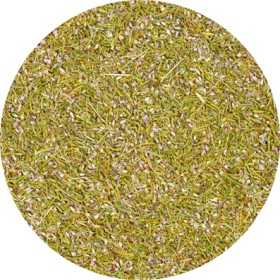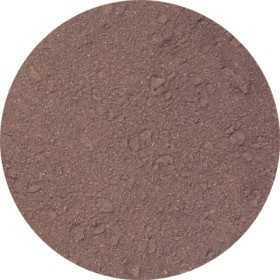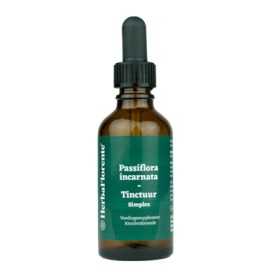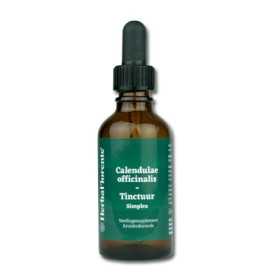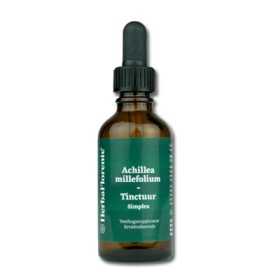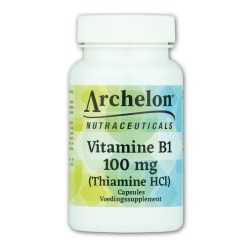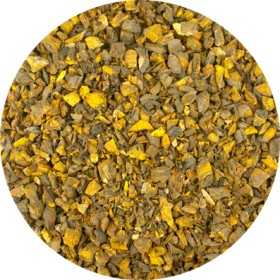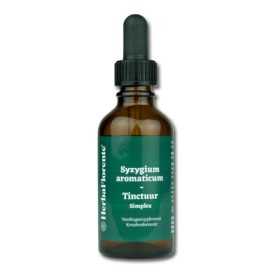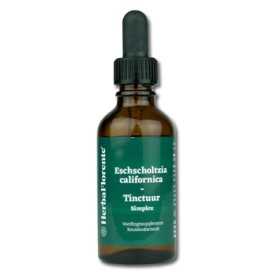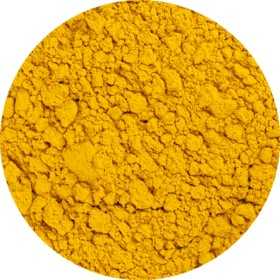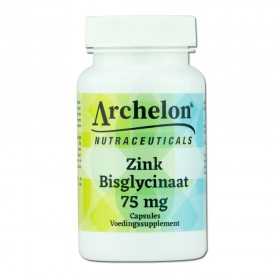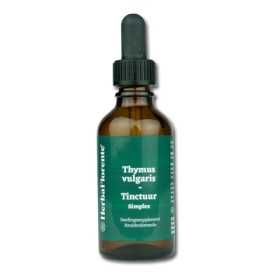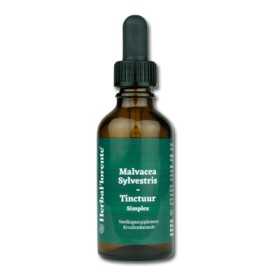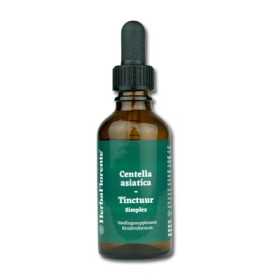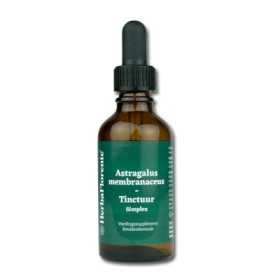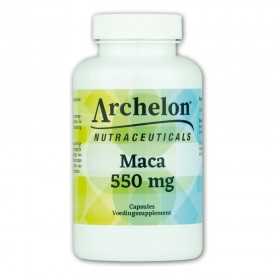Best sellers
There are 392 products.
Eucalyptus Tincture - Eucalypti globulus Tincture
Single herbal tincture made with dried leaf of Eucalypti globulus (Eucalyptus).
Eucalyptus (Eucalyptus globulus) belongs to the myrtle family (Myrtaceae) and is native to Australia and neighboring areas. Some specimens were brought to Europe by Joseph Banks during Captain Cook's expedition.
In Europe, eucalyptus is mainly planted in the Mediterranean region, although it can also thrive on the west coast of England and Scotland, although only some species can withstand winter.
Eucalyptus (Eucalyptus globulus) belongs to the myrtle family (Myrtaceae) and is native to Australia and neighboring areas. Some specimens were brought to Europe by Joseph Banks during Captain Cook's expedition.
In Europe, eucalyptus is mainly planted in the Mediterranean region, although it can also thrive on the west coast of England and Scotland, although only some species can withstand winter.
€10.95
Shrub Heather - Erica vulgaris
The Heather (Erica vulgaris - Calluna vulgaris) belongs to the heath family (Ericaceae) and grows throughout Europe, especially in Central and Northern Europe. It even reaches Western Siberia in the east. In the nineteenth century, Scottish immigrants brought the heather to Canada, from where it spread throughout North America. It is the only species in the genus Calluna, meaning it is a monotypic genus.
The shrub heath can grow to a height of 10-100 cm, sometimes even up to 150 cm in certain places. It has hermaphroditic, symmetrical flowers, with the calyx and petals being the same color. Purple flowers appear towards the end of the branches, creating the purple heaths from late July to early September.
The shrub heath can grow to a height of 10-100 cm, sometimes even up to 150 cm in certain places. It has hermaphroditic, symmetrical flowers, with the calyx and petals being the same color. Purple flowers appear towards the end of the branches, creating the purple heaths from late July to early September.
€2.20
From: €2.20
Aronia berry - Arnoia melanocarpa
Out-of-Stock
Aronia berries, also called black chokeberries (Aronia melanocarpa), grow on compact bushes of about 1 to 3 meters high. The berries have a deep purple to black color.
Aronia berries are particularly rich in anthocyanins, the flavonoids that give the berries their characteristic color. Flavonoids are plant substances that protect the plant against ultraviolet light, oxidation and heat. Compared to blueberries, aronia berries contain four times more anthocyanins.
The black fruits contain different types of anthocyanins. The natural function of these anthocyanins and other polyphenols is to protect the seed of the aronia berry against harmful external influences. Anthocyanins act as natural antioxidants.
Aronia berries are particularly rich in anthocyanins, the flavonoids that give the berries their characteristic color. Flavonoids are plant substances that protect the plant against ultraviolet light, oxidation and heat. Compared to blueberries, aronia berries contain four times more anthocyanins.
The black fruits contain different types of anthocyanins. The natural function of these anthocyanins and other polyphenols is to protect the seed of the aronia berry against harmful external influences. Anthocyanins act as natural antioxidants.
€2.50
From: €2.50
Vitamin C (Sodium Ascorbic Acid) - 625 mg
The pure form of vitamin C is ascorbic acid. The buffered forms of ascorbic acid are generally better tolerated by humans than the pure form. Ascorbic acid is acidic, the fused forms give virtually no gastrointestinal problems. Vitamin C is an essential vitamin for the body. It is involved in many processes in the body, including immune system, blood vessels, bones, cartilage, gums, teeth, skin, energy metabolism, nervous system and fatigue.
€17.95
Pine Tincture - Pinus silvestris Tincture
Single herbal tincture made with dried needle of Pinus silvestris (Pine).
The Scots pine (Pinus sylvestris) belongs to the pine family (Pinaceae) and can reach a respectable age of 200 to 300 years, thanks to its rich resin content.
In phytotherapy, the needles and buds of the Scots pine are used because of their content of tannins, flavonoids and vitamins. The oleoresin of this tree is rich in turpentine. This species is known for its abundant monoterpenes, such as α-pinene, β-pinene and limonene, which form an essential oil with expectorant, antiseptic, decongestant, venolymphatic and anti-inflammatory properties.
The Scots pine (Pinus sylvestris) belongs to the pine family (Pinaceae) and can reach a respectable age of 200 to 300 years, thanks to its rich resin content.
In phytotherapy, the needles and buds of the Scots pine are used because of their content of tannins, flavonoids and vitamins. The oleoresin of this tree is rich in turpentine. This species is known for its abundant monoterpenes, such as α-pinene, β-pinene and limonene, which form an essential oil with expectorant, antiseptic, decongestant, venolymphatic and anti-inflammatory properties.
€9.95
Passion Flower Tincture - Passiflora incarnata Tincture
Single herbal tincture made with dried herb of Passiflora incarnata (Passion Flower).
Passionflower (Passiflora incarnata) is known as a traditional herb that has long been used to reduce stress and inner turmoil. Native people of Central and North America used various parts of the plant to relax and sleep better. It is a natural sedative.
Although the blue passion flower originally only grew in America, it can now be found almost everywhere. The flowers of the Passiflora incarnata are not only beautiful to look at, but also edible. In the fall, passion fruits grow and the leaves are also edible. These leaves are rich in tannins, flavanols, saponins, choline and magnesium.
Passionflower (Passiflora incarnata) is known as a traditional herb that has long been used to reduce stress and inner turmoil. Native people of Central and North America used various parts of the plant to relax and sleep better. It is a natural sedative.
Although the blue passion flower originally only grew in America, it can now be found almost everywhere. The flowers of the Passiflora incarnata are not only beautiful to look at, but also edible. In the fall, passion fruits grow and the leaves are also edible. These leaves are rich in tannins, flavanols, saponins, choline and magnesium.
€11.95
Marigold Tincture - Calendulae officinalis Tincture
Single herbal tincture made with dried flower of Calendulae officinalis (marigold).
The marigold (Calendula officinalis) is a member of the composite family (Compositae or Asteraceae) and is often grown in ornamental gardens. This plant originally comes from Southern Europe.
It is an annual plant that usually bears orange, but sometimes yellow flowers. The marigold usually grows to a height of 30-45 cm and has blunt leaves. Its flowering period extends from May to November, while the fruits are often curved and boat-shaped.
Both fresh and dried flowers can be used in soups, and they also act as a natural coloring for cheese, butter and other foods. Historically, the petals were even used to imitate saffron.
The marigold (Calendula officinalis) is a member of the composite family (Compositae or Asteraceae) and is often grown in ornamental gardens. This plant originally comes from Southern Europe.
It is an annual plant that usually bears orange, but sometimes yellow flowers. The marigold usually grows to a height of 30-45 cm and has blunt leaves. Its flowering period extends from May to November, while the fruits are often curved and boat-shaped.
Both fresh and dried flowers can be used in soups, and they also act as a natural coloring for cheese, butter and other foods. Historically, the petals were even used to imitate saffron.
€9.95
Yarrow Tincture - Achillea millefolium Tincture
Single herbal tincture made with dried herb of Achillea millefolium (Yarrow).
Yarrow (Achillea millefolium) is an herb that belongs to the daisy family (Asteraceae). It is a winter-hardy, perennial plant that is common in the Netherlands. It has finely divided, feathery leaves and small white flowers that tend toward pink. The use of this herb has been around for centuries. Yarrow is used, among other things, to support digestion and promote fat metabolism. The herb is beneficial for the blood vessels, urinary tract and respiratory tract. It helps with normal menstruation.
Yarrow (Achillea millefolium) is an herb that belongs to the daisy family (Asteraceae). It is a winter-hardy, perennial plant that is common in the Netherlands. It has finely divided, feathery leaves and small white flowers that tend toward pink. The use of this herb has been around for centuries. Yarrow is used, among other things, to support digestion and promote fat metabolism. The herb is beneficial for the blood vessels, urinary tract and respiratory tract. It helps with normal menstruation.
€11.95
Co-enzyme Q10 - 100 mg
Coenzyme Q10 is an indispensable substance for the body, essential for the conversion of food energy into bioenergy. This fat-soluble substance is found in the mitochondria (the energy factories) of every cell in the human body. Coenzyme Q10 can be found in foods such as meat (e.g. turkey), fish, grains and nuts. However, the amount of Q10 in our diet has decreased, making it often no longer sufficient.
Q10 is widely distributed in our body, which is why it is also called ubiquinone (derived from the Latin word for 'present everywhere'). Ubiquinone is the biologically active and endogenous form of Q10 and plays a crucial role in the energy production of every cell. CoQ10, the most active form of ubiquinone, is efficiently absorbed by the body.
Q10 is widely distributed in our body, which is why it is also called ubiquinone (derived from the Latin word for 'present everywhere'). Ubiquinone is the biologically active and endogenous form of Q10 and plays a crucial role in the energy production of every cell. CoQ10, the most active form of ubiquinone, is efficiently absorbed by the body.
€42.95
Vitamin B1 (Thiamine HCl) - 100 mg
Vitamin B1 (Thiamine) is the precursor of the biologically active form of vitamin B1, thiamine pyrophosphate (TTP). Magnesium is required for the conversion of thiamine into TTP. Thiamine pyrophosphate is involved as a coenzyme in various reactions related to energy metabolism. Including the release of energy from fats, carbohydrates and proteins. It plays a role in energy metabolism in all cells, including the cells of the heart and nervous system. With which it contributes to the normal functioning of the heart and nervous system. Vitamin B1 is also important for brain and nerve functions, which are decisive for aspects such as concentration, memory and mood.
€19.95
Black Walnut Tincture - Juglandis nigrum Tincture
Single herbal tincture made with the dried husk of Juglandis nigrum (Black Walnut).
The husk of the black walnut (Juglans nigra) comes from the immature fruit of the black walnut tree (Juglans nigra).
Black walnut (Juglans nigra, also known as 'black nut') is a type of walnut that grows naturally only in the United States and Canada, hence the term American black walnut. Juglans nigra belongs to the walnut family.
The husk of the black walnut (Juglans nigra) comes from the immature fruit of the black walnut tree (Juglans nigra).
Black walnut (Juglans nigra, also known as 'black nut') is a type of walnut that grows naturally only in the United States and Canada, hence the term American black walnut. Juglans nigra belongs to the walnut family.
€10.95
Russian / Chinese Rhubarb - Rheum palmatum / Rheum officinalis
Rheum officinale, also known as Chinese rhubarb or Russian rhubarb, belongs to the knotweed family (Polygonaceae). This plant is native to mountainous areas in western and northwestern China, India, Tibet, Russia and Turkey. The plant grows at altitudes between 1200 and 4000 meters and can reach an impressive height of 1.5 to 2 meters.
€2.50
From: €2.50
Clove Tincture - Syzygium aromaticum Tincture
Single herbal tincture made with dried flower of Syzygium aromaticum (Clove).
Clove (Syzygium aromaticum) is the dried, fragrant flower bud of the clove tree. The main active ingredient is eugenol, which also promotes the antioxidant properties of cloves. Clove is known for its antioxidant effect and supports healthy digestion. In addition, it improves blood circulation and soothes the throat.
Clove (Syzygium aromaticum) is the dried, fragrant flower bud of the clove tree. The main active ingredient is eugenol, which also promotes the antioxidant properties of cloves. Clove is known for its antioxidant effect and supports healthy digestion. In addition, it improves blood circulation and soothes the throat.
€10.95
California Poppy Tincture - Eschscholtzia californica Tincture
Single herbal tincture made with dried herb of Eschscholtzia californica (California Poppy).
California Poppy, also known as golden poppy (Eschscholtzia californica), is a plant with golden yellow flowers that belongs to the poppy family. It owes this name to its soothing properties, which help with natural, healthy sleep and stress reduction.
This plant is native to California, hence the name. The indigenous people of America traditionally used golden poppy as a sedative herb and to help them sleep better. The aerial parts of the golden poppy contain several active substances, including quinolide alkaloids, rutin, phytosterols, carotenoids and cyanogen glycosides.
California Poppy, also known as golden poppy (Eschscholtzia californica), is a plant with golden yellow flowers that belongs to the poppy family. It owes this name to its soothing properties, which help with natural, healthy sleep and stress reduction.
This plant is native to California, hence the name. The indigenous people of America traditionally used golden poppy as a sedative herb and to help them sleep better. The aerial parts of the golden poppy contain several active substances, including quinolide alkaloids, rutin, phytosterols, carotenoids and cyanogen glycosides.
€10.95
Tumeric zanth. - Curcumae zanthorrhizae
Curcuma (also known as Javanese Ginger) (Curcumae zanthorrhizae) is respected worldwide as one of the most valuable spices. It originates in the tropical regions of India and Southeast Asia. The powder of the root is known for its popularity in Asian cuisine and is known in the Netherlands as turmeric, due to its role in coloring curry and mustard.
In addition to its culinary uses, turmeric also offers several health benefits. Curcuma has been used in India for centuries because of its effective effect on flexible joints and intestinal function. It is a powerful antioxidant that benefits the liver and musculoskeletal system, while also aiding digestion.
In addition to its culinary uses, turmeric also offers several health benefits. Curcuma has been used in India for centuries because of its effective effect on flexible joints and intestinal function. It is a powerful antioxidant that benefits the liver and musculoskeletal system, while also aiding digestion.
€2.20
From: €2.20
Zinc Bisglycinate - 75 mg
Zinc is available in different forms. Zinc bisglycinate has a very good bioavailability. It is a chelated form of zinc bound to two (bis) molecules of the amino acid glycine which has more benefits for the body. Zinc has a very wide range of action and is involved in many body processes. Zinc is essential for the activity of more than 300 enzymes that have the zinc ion as a cofactor. Zinc is also important for proteins and cell membranes. Zinc is important for the immune system, acid-base metabolism, carbohydrate metabolism, DNA synthesis, cognitive functions, fertility, reproduction, vitamin A metabolism, macronutrient metabolism, bones, hair, skin, nails, hormones and cell division, among other things.
€16.95
Jiaogulan - 450 mg
Gynostemma pentaphyllum, also known as 'jiaogulan', is a climbing plant naturally occurring in Japan, southeastern China and Thailand. In the Netherlands this plant is known as 'immortality herb' or 'eternal life herb'. It has a prominent place in traditional Chinese herbal medicine. Rich in antioxidants, this herb supports normal liver function and helps maintain healthy blood sugar levels. It also has benefits for the heart, blood vessels and cholesterol levels.
€21.95
Thyme Tincture - Thymus vulgaris Tincture
Single herbal tincture made with dried herb of Thymus vulgaris (Thyme).
Thyme (Thymus vulgaris L.) is not only a great seasoning in the kitchen, but also an ally for our health. This herb, recognizable by its characteristic smell, soothes the respiratory tract and promotes freer breathing. In addition, thyme supports digestion.
Thyme (Thymus vulgaris L.) is not only a great seasoning in the kitchen, but also an ally for our health. This herb, recognizable by its characteristic smell, soothes the respiratory tract and promotes freer breathing. In addition, thyme supports digestion.
€10.95
Mallow Large Tincture - Malvacea Sylvestris Tincture
Single herbal tincture made with dried flower of Malvacea Sylvestris (Mallow Large).
The flowers of mallow (Malva) are known for their natural wealth of mucilages, which have a soothing effect on the mucous membranes of the respiratory tract. Gargling with mallow tea can help with hoarseness and other throat complaints. In addition, mallow can be applied externally for eczema and ulcers.
Mallow belongs to the family Malvaceae and includes thirty species of herbaceous plants found in temperate, subtropical and tropical regions of Africa and Eurasia. The fruit of the mallow is a split fruit and owes its name to the flat, round shape, comparable to a cheese, due to the connected seeds.
The flowers of mallow (Malva) are known for their natural wealth of mucilages, which have a soothing effect on the mucous membranes of the respiratory tract. Gargling with mallow tea can help with hoarseness and other throat complaints. In addition, mallow can be applied externally for eczema and ulcers.
Mallow belongs to the family Malvaceae and includes thirty species of herbaceous plants found in temperate, subtropical and tropical regions of Africa and Eurasia. The fruit of the mallow is a split fruit and owes its name to the flat, round shape, comparable to a cheese, due to the connected seeds.
€13.95
Meadowsweet Tincture - Filipendulae ulmaria Tincture
Single herbal tincture made with dried herb of Filipendulae ulmaria (Meadsweet).
The meadowsweet (Filipendula ulmaria) is a perennial plant belonging to the rose family (Rosaceae). It is an erect plant that can reach a height of 0.6 to 2 meters. The flowers of the meadowsweet are numerous and cream-colored, with a width of 0.4 to 1 cm and each consisting of five petals, which have a strong almond scent. The leaves are pinnately compound, with a large top leaflet that is palmately split.
In the past, meadowsweet was used as a remedy for biliary and kidney diseases, as well as for gout and nerve pain. The dried leaves and flowers were used to make tea, which was given for fever.
The meadowsweet (Filipendula ulmaria) is a perennial plant belonging to the rose family (Rosaceae). It is an erect plant that can reach a height of 0.6 to 2 meters. The flowers of the meadowsweet are numerous and cream-colored, with a width of 0.4 to 1 cm and each consisting of five petals, which have a strong almond scent. The leaves are pinnately compound, with a large top leaflet that is palmately split.
In the past, meadowsweet was used as a remedy for biliary and kidney diseases, as well as for gout and nerve pain. The dried leaves and flowers were used to make tea, which was given for fever.
€10.95
Asiatic Pennywort Tincture - Centella asiatica (Hydrocotyles) Tincture
Single herbal tincture made with dried herb of Centella asiatica (Hydrocotyles) (Asiatic Pennywort) (Gotu kola).
Asian pennywort also known as Gotu kola(Centella asiatica), is a plant that thrives in Southeast Asia and plays a central role in Ayurvedic medicine. Due to its diverse active substances, Asian pennywort is widely used in herbal medicine. It is known for supporting cognitive functions such as memory, concentration and learning, and it is also used to promote healthy blood circulation and vascular function.
Asian pennywort also known as Gotu kola(Centella asiatica), is a plant that thrives in Southeast Asia and plays a central role in Ayurvedic medicine. Due to its diverse active substances, Asian pennywort is widely used in herbal medicine. It is known for supporting cognitive functions such as memory, concentration and learning, and it is also used to promote healthy blood circulation and vascular function.
€9.95
Astragalus Tincture - Astragalus membranaceus Tincture
Single herbal tincture made with dried root of Astragalus membranaceus (Astragalus).
Astragalus, also known as Fleshy Locust (Astragalus membranaceus), is a plant native to Asia. It has been used for 2000 years in traditional Chinese herbal medicine to strengthen the immune system. In addition to this property, astragalus has many other benefits. According to Chinese tradition, it strengthens the life force, or 'qi', as it is called in China, when ingested. It is known as a powerful antioxidant and is especially valued for its ability to support the immune system.
Astragalus, also known as Fleshy Locust (Astragalus membranaceus), is a plant native to Asia. It has been used for 2000 years in traditional Chinese herbal medicine to strengthen the immune system. In addition to this property, astragalus has many other benefits. According to Chinese tradition, it strengthens the life force, or 'qi', as it is called in China, when ingested. It is known as a powerful antioxidant and is especially valued for its ability to support the immune system.
€9.95
Maca - 550 mg
Maca (Lepidium meyenii) grows in the central Andes of Peru at an altitude of more than 4000 meters. This herbaceous biennial plant, known for its tuber, is prized by the indigenous people of Peru as a rich, natural source of vitamins and minerals.
Maca is known for its ability to promote vitality and support libido. In addition, maca can be effective in relieving menopausal symptoms. The extract of this special tuber has been used for centuries to help both men and women improve their energy and sexual health.
Maca is known for its ability to promote vitality and support libido. In addition, maca can be effective in relieving menopausal symptoms. The extract of this special tuber has been used for centuries to help both men and women improve their energy and sexual health.
€21.95
Echinacea (Red Coneflower) - 350 mg
Purple coneflower (Echinacea purpurea) is one of the most widely grown and used herbs in the world because of its positive influence on the immune system. The genus name 'echinacea' is derived from the Greek word 'echinos', meaning 'hedgehog', because of the spiky flower cone. Since the beginning of the last century, much research has been done into Echinacea purpurea in Europe.
This plant has a rich history and originally comes from North America. Indigenous tribes used this perennial plant for its beneficial effects on the immune system. Colonist doctor H.C.F. Meyer adopted this knowledge from the indigenous population and brought the first product based on echinacea onto the market in 1871.
This plant has a rich history and originally comes from North America. Indigenous tribes used this perennial plant for its beneficial effects on the immune system. Colonist doctor H.C.F. Meyer adopted this knowledge from the indigenous population and brought the first product based on echinacea onto the market in 1871.
€15.96
€19.95

















